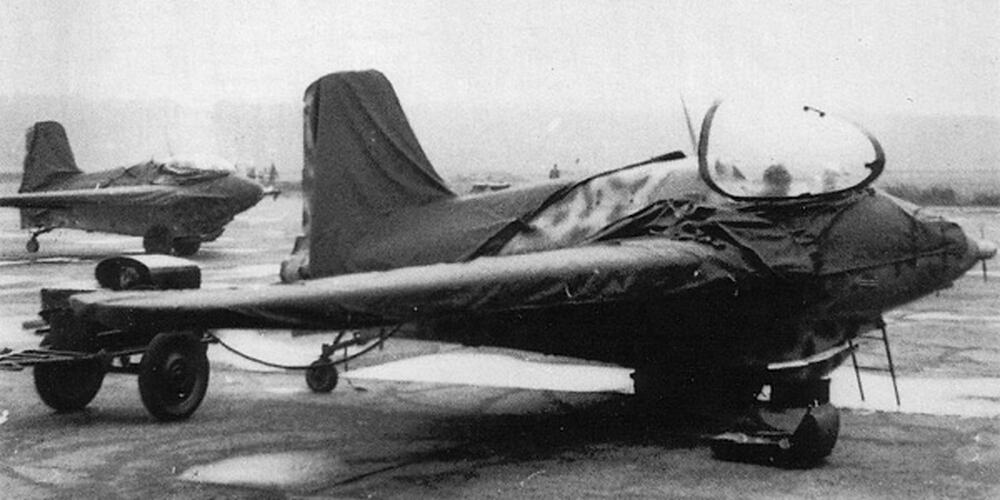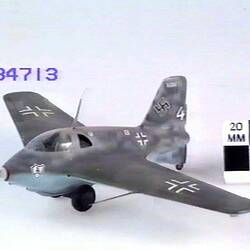The Messerschmitt Me 163 Komet was among the most technically advanced and inherently dangerous military aircraft ever to see service. The radical 'tailless' design was developed by Dr Alexander Lippisch as the DFS 194 at the Deutsche Forshungsanstalt fur Segelflug, (German Sailplane Research Institute) at Darmstadt in the 1930s. In January 1939, project work on the DFS 194 was transferred to Messerschmitt AG at Augsburg who were to be responsible for fitting a rocket motor. Lippisch also moved to Messerschmitt AG to head the development project team. By some accounts Professor Willy Messerschmitt was not impressed with the concept of a rocket interceptor and gave the project a low priority. The Me 163A as the aircraft was now designated was first flown under rocket power in 1940 becoming the first aircraft to exceed 1000 km/h, experiencing control problems on the edge of the sound barrier. The Heinkel He 176 experimental rocket aircraft had previously flown in June 1939.
The rocket motor fitted to the production model Me 163B-1 was the Walter HWK 109-509A-2 fuelled by a mixture of hydrogen peroxide (T-stoff) and hydrazine/methanol (C-stoff). This was the first mass-production liquid-fuel rocket. The chemical reaction generated by mixing the two liquids provided a maximum 1700 kg thrust. These highly corrosive and explosive fuels caused accidents especially in combination with the unusual undercarriage which consisted of a trolley jettisoned after becoming airborne. Hard landings on the unsprung retractable skid could cause a Komet to overturn with residual fuel exploding. Flight endurance under power was just eight minutes after which the aircraft became a glider. It was flown in combat by the Luftwaffe unit JG 400 in 1944-45 which employed their wooden-winged aircraft to attack American daylight bomber formations after a rapid climb to altitude. With a top speed of around 960 km/h, the time available to attack enemy aircraft using the Komet's two 30mm MK 108 cannons was very limited. Once the rocket's fuel supply was exhausted the Komet was an easy target for fighter aircraft. One Komet was taken to Japan by U-boat and used as the pattern for the Mitsubishi J8M1 which did not become operational before Japan surrendered in August 1945. In 1946 a Me 163B Komet was brought to Australia and is now held in the collection of the Australian War Memorial in Canberra. Along with the Horten brothers 'flying wing' designs, Lippisch's tailless delta was highly influential in the design of many post-war jet aircraft due to the proven low drag properties of this configuration. Lippisch moved to the USA after the war where he remained until his death in 1976.
More Information
-
Keywords
-
Authors
-
Article types


